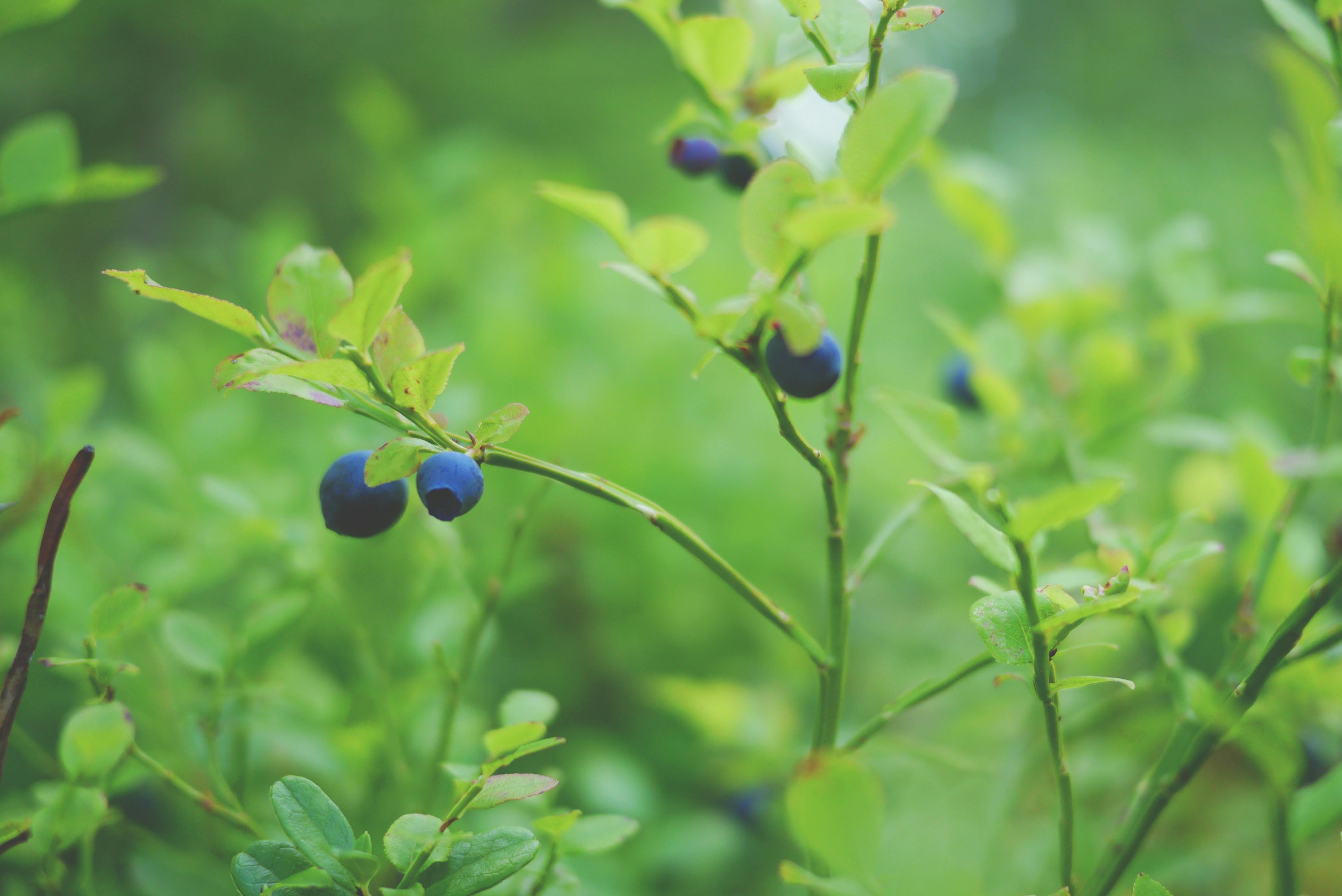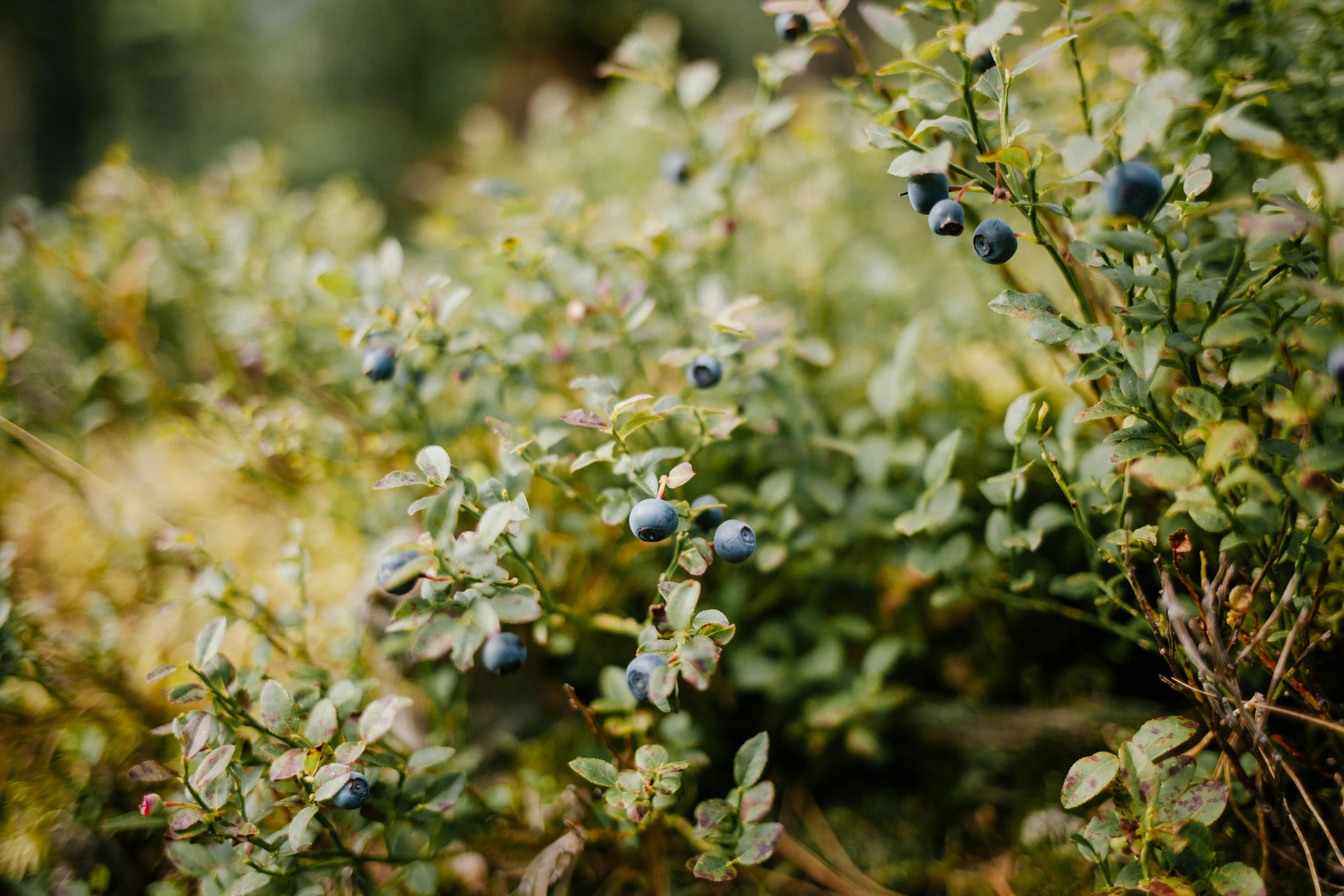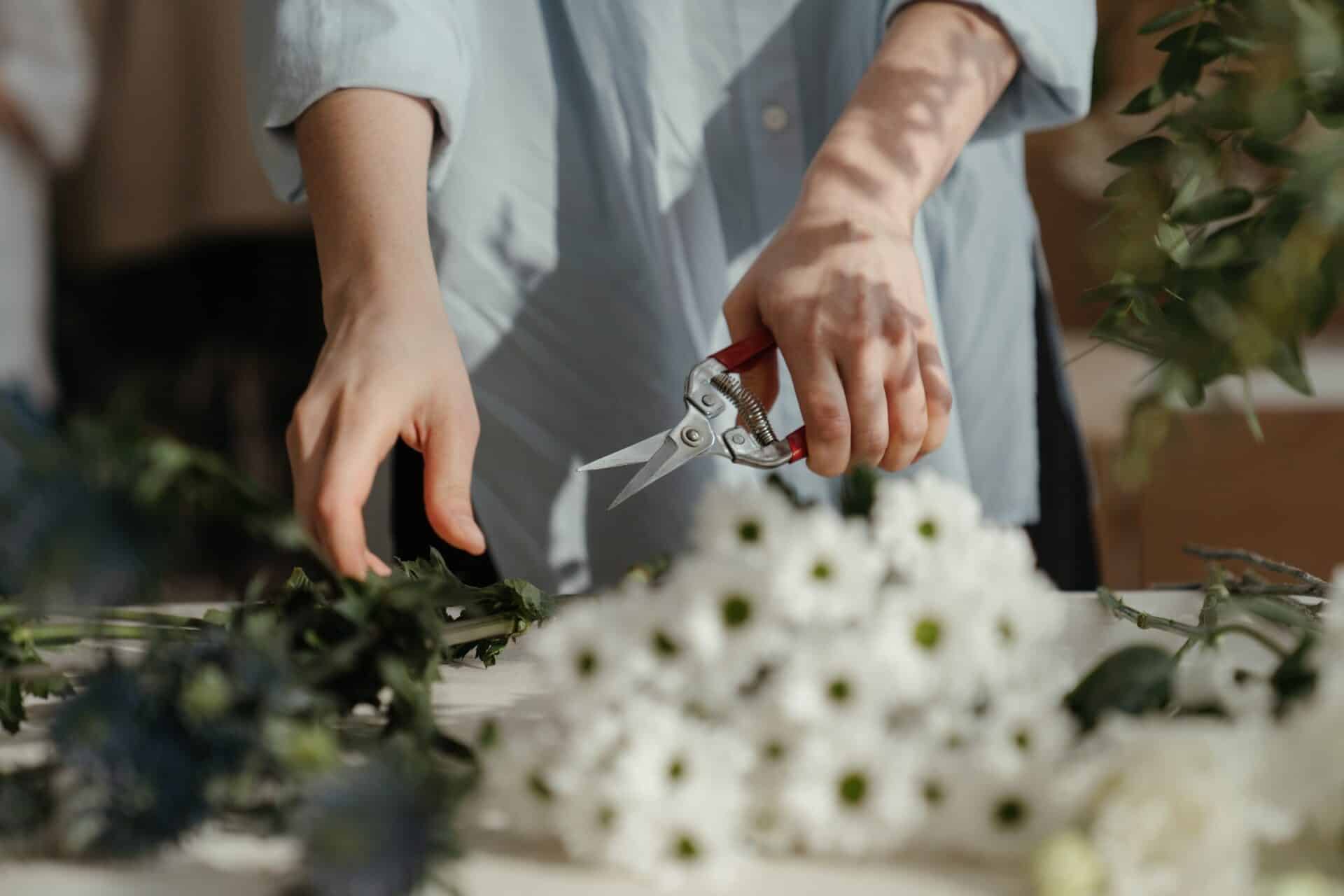Pruning blueberry plants is an important part of their maintenance and can help them to produce larger, healthier berries. Pruning also helps to keep the blueberry bush neat and manageable. It is important to prune your blueberry plants correctly in order to maximize their productivity and ensure that they remain healthy. In this article, we will discuss how to properly prune blueberry plants so that you can enjoy a bountiful harvest year after year.Pruning blueberry plants is an important part of maintaining a healthy and productive harvest. Pruning should be done annually, preferably in late winter while the plants are still dormant. Begin by removing any dead, diseased or damaged branches first. Then thin out the canopy by removing any weak or crossing branches that are too close together. This will help promote better air circulation and light penetration to the inner parts of the plant. Lastly, remove any suckers or shoots that are growing from the base of the plant or along the main stem. If needed, you can also cut back some of the longer branches to maintain desired shape and size.
Reasons for Pruning Blueberry Plants
Pruning blueberry plants is an essential part of their care and maintenance. Pruning helps promote healthy growth, increase fruit production, and ensure that the plant remains manageable. Pruning blueberry plants has several benefits, such as:
1. Promoting New Growth: Pruning helps stimulate new growth and encourages the production of larger berries. It also helps to reduce competition among branches for resources like light and nutrients.
2. Improving Air Circulation: Pruning can help to improve air circulation around the plant, which can help to prevent diseases from developing on the leaves or fruits. This can also help to reduce damage from pests such as mites or aphids.
3. Controlling Size: Pruning is important for controlling the size of your blueberry plants. Without regular pruning, they can become too large and difficult to manage. Keeping them pruned will keep them at a manageable size while still producing plenty of delicious berries for you to enjoy!
4. Maintaining Shape: Pruning your blueberry plant regularly will keep it looking neat and tidy, as well as ensuring it continues to grow in a healthy manner throughout the season. This is especially important if you are growing your blueberries in a container or other limited space.
By pruning your blueberry plants regularly, you can ensure that they remain healthy and productive throughout their growing season. It’s an important part of caring for these delicious berries!
When to Prune Blueberry Plants
Pruning blueberry bushes is an important part of maintaining a healthy, productive blueberry patch. Pruning helps stimulate new growth and increase yields, but it needs to be done at the right time and in the right way. To ensure that your blueberries thrive, it’s important to understand when and how to prune them correctly.
The best time to prune blueberry bushes is in late winter or early spring when the plants are still dormant. During this time, the plants are not actively growing, so pruning won’t disrupt their growth cycle. However, it’s important to wait until after the threat of frost has passed before pruning blueberries. Pruning too early can lead to frost damage on newly exposed buds and branches.
When pruning blueberry bushes, start by removing any dead or diseased branches first. Then focus on trimming back overly long branches and thinning out any overcrowded areas. It’s also important to remove any weak or spindly shoots that don’t have enough foliage or fruit production potential. Finally, be sure to leave some of the older canes intact as they will produce more fruit than younger ones.
Pruning blueberry bushes is an important part of maintaining a healthy berry patch, but timing is key. Make sure you wait until after the threat of frost has passed before you start pruning your blueberries for best results!
What Tools are Needed for Pruning Blueberry Plants?
Pruning blueberry plants is an important part of the maintenance of a healthy and productive blueberry bush. Pruning encourages the growth of new shoots and keeps the plant from becoming too dense with foliage. The correct pruning tools are essential for getting the job done right. To properly prune blueberry plants, you will need a pair of sharp bypass or anvil pruners, a pair of long-handled loppers, and a pruning saw.
Bypass or anvil pruners are designed to make clean cuts through stems and branches that are up to 1/2 inch thick. These should be kept sharp to prevent tearing of the bark and damaging the stem or branch as you make the cut. Long-handled loppers are great for cutting thicker branches up to 2 inches in diameter. They have long handles that allow you to reach further into the bush, making it easier to access the interior branches. Lastly, a good pruning saw is essential for cutting through thick branches that cannot be managed with either bypass or anvil pruners or loppers. A hand saw with a curved blade is ideal for this job as it allows you to make precise cuts with less effort than using standard hacksaws or bow saws.
With these basic tools on hand, you’ll be able to tackle any pruning job on your blueberry bush. Prune at least once per year in late winter before new growth begins in order to ensure that your blueberry bush remains productive and healthy for many years to come!
Preparing the Plant Before Pruning
Pruning is an important part of keeping a healthy garden or landscape. Before pruning your plants, it is important to properly prepare them for the task. This includes evaluating the overall health of the plant, assessing its growth patterns, and ensuring that all necessary tools are ready. It also involves familiarizing yourself with the best pruning techniques for your particular plant, and making sure that any dead or damaged branches are removed first. Doing so will help increase air circulation and allow more light to reach all parts of the plant.
When evaluating a plant’s health before pruning, it is important to inspect it carefully. Look out for signs of disease such as discolored leaves, wilting, or any other abnormalities. If you find any of these issues, it may be best to wait until they have been treated before attempting to prune. It is also important to consider how much energy a particular plant has by inspecting its foliage and checking for new growth in areas like flower buds or new branches.
Once you’ve determined that a plant is healthy enough to be pruned, you should assess its growth patterns. This includes looking at how much foliage there is on each branch and noting any areas where there may be too much or too little growth. You should also take into account how much light each part of the plant receives, as this can have an impact on which branches should be pruned back and which ones should be left alone.
Finally, make sure that all necessary tools are ready before attempting any pruning work. This includes sharp hand shears for small branches and tree loppers for larger ones. Be sure that the blades are clean before use and always wear protective gloves when handling sharp tools. By properly preparing your plants before pruning them, you can ensure that they remain healthy and vigorous throughout their growing season.

1. Prune in the winter
Pruning blueberry plants is best done in the winter when the plants are dormant. This is when they are least likely to be affected by disease and pests, and when their energy reserves are at their lowest level. Pruning during this time also helps to reduce the chances of plants being damaged by cold weather or extreme temperatures. When pruning, it’s important to only remove dead or diseased branches, as well as any that are growing too densely or rubbing against each other.
2. Use sharp tools
Sharp pruning tools are essential for effective pruning of blueberry plants. Dull tools can cause damage to the branches and leaves, which can lead to infection and disease. It’s important to use clean tools when pruning, so that you don’t spread any diseases from one plant to another. Before beginning your pruning session, make sure that you thoroughly clean and sharpen your tools.
3. Cut at an angle
When pruning blueberry plants, it’s important to make cuts at an angle rather than straight across. This helps promote healing of the wound and prevents disease from taking hold in the area where you’ve made your cut. It also helps to ensure that the remaining branch is strong enough to support new growth.
4. Remove weak branches
It’s important to remove weak branches or those that are growing too close together on a blueberry plant. These can cause overcrowding and limit air circulation, which can lead to fungal diseases or reduced yields of fruit. When removing weak branches, it’s best to cut them off as near as possible to their base so as not to leave a large wound for disease spores or pests.
5. Prune selectively
It’s important not to over-prune blueberry plants; doing so can weaken them and reduce their ability to produce fruit in future years. Instead of cutting out large numbers of branches indiscriminately, focus on removing only those that are dead or diseased, rubbing against each other, or growing too densely together in one area of the plant.
Cutting Branches to Promote Growth
Pruning or cutting branches is an important part of tree care. Pruning can help trees stay healthy and strong, and can also promote growth. While it may seem counterintuitive to cut a tree’s branches for it to grow, pruning can help to manage the size and shape of a tree by removing dead or diseased branches. It can also improve the overall health of the tree by removing weak, diseased, or pest-infested branches that could otherwise spread and cause further damage. Pruning also helps to encourage new growth in areas that have been neglected or have suffered from environmental stress.
The best time to prune a tree is during its dormant season, usually in late winter or early spring when the leaves have dropped off and there are few new buds on the stem. This is because pruning encourages new growth that will be ready for the coming growing season. Pruning should be done carefully and with precision as each cut has an effect on the overall shape of the tree. Cuts should be made just above a bud at an angle facing outward so that new growth will not be hindered by too much shade from other branches.
When pruning trees, it’s important to take into account both short-term and long-term objectives for your tree care plan. Pruning too aggressively can stunt growth, while neglecting pruning altogether can lead to unhealthy trees with dead or damaged branches that need more attention than if they had been taken care of earlier on. A qualified arborist can help you create a plan for proper pruning that will promote healthy growth in your trees over time. With regular maintenance, your trees will remain healthy and strong for years to come!
Removing Dead or Diseased Branches
Removing dead or diseased branches from trees is an important part of tree maintenance and care. It helps keep the tree healthy and can help prevent the spread of diseases to other trees. Dead or diseased branches should be removed as soon as they are spotted, as they can cause damage to the surrounding area and pose a safety hazard if left untreated. The best time to remove dead or diseased branches is during the dormant season when the tree’s growth is slowed down.
Before pruning any dead or diseased branches, it is important to identify them correctly. They usually have discolored leaves, wilted foliage, and bark that may be cracked, flaky, or peeling away from the branch. Pruning should be done using sharp pruning shears or a saw. It is important not to leave any stubs behind as these can become infected with disease and encourage rot in the tree.
It is also important to take into account the overall shape and structure of the tree when pruning dead or diseased branches. Pruning should be done with care so that it does not affect the aesthetics of the tree too much, and all cuts should be made at natural angles so that water can easily run off them. It is also important to avoid leaving large gaps in the canopy since this will make it easier for wind to cause damage by uprooting smaller branches in storms.
In conclusion, removing dead or diseased branches from trees is an important part of proper tree maintenance and care. Doing so will help keep your trees healthy and free from disease while also keeping your yard safe from hazards posed by rotting branches.

Conclusion
Pruning blueberry plants is a great way to help them stay healthy and productive. It’s important to prune early and often, as well as follow the proper steps to ensure your plants are well taken care of. Pruning helps promote air circulation, increase light exposure, and encourage larger fruit production. You should also consider removing dead or diseased branches, thinning out crowded canes, and cutting back unproductive branches. With patience and practice, you can become an expert in blueberry pruning.
Pruning can be a daunting task for novice gardeners, but with the right tools and techniques you can become a master of blueberry pruning in no time. Remember that pruning is essential for keeping your plants healthy and productive for years to come. Pruning blueberry plants can be a rewarding experience that will help ensure your success as a gardener.



